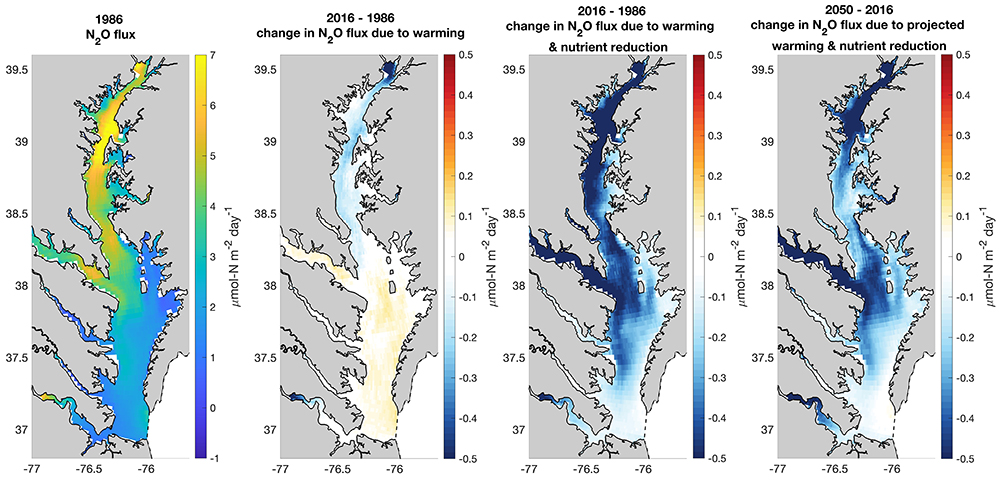
Weiyi Tang, assistant professor of chemical oceanography at the USF College of Marine Science, is the lead author of the paper published in Science Advances. His research group studies how global ocean ecosystem (particularly the biogeochemical cycling of elements) will change under human impacts and climate change, and characterizes how these changes will affect our planet.
“Atmospheric nitrous oxide (N2O), an important greenhouse gas and the dominant oxygen-destructing substance, regulates Earth’s climate system and contributes to climate change. N2O emissions have increased substantially largely due to the rise in nitrogen loading to croplands and aquatic environments. Many estuarine and coastal waters are large but highly uncertain sources of N2O into the atmosphere, meanwhile experiencing eutrophication, deoxygenation, and warming. However, the response of estuarine and coastal N2O emissions to these changes is poorly understood. By measuring N2O production rates under experimentally manipulated changes in oxygen and temperature in Chesapeake Bay, the largest estuary in the United States, we found N2O production rates increased with oxygen depletion and warming. By developing a biogeochemical model and incorporating the observed responses of N2O cycling to oxygen and temperature, we estimated N2O emissions from Chesapeake Bay decreased from 1986 to 2016 and will continue to decrease in future. The changes in N2O emissions are largely attributed to decreased nutrient inputs and increased oxygen concentrations despite warming. Thus, nutrient management not only improves water quality but also has the potential to reduce greenhouse gas emissions. Our study informs the prediction of future estuarine N2O emissions, and guides the management strategy in aquatic systems to reduce nitrogen loading and curb greenhouse gas emissions, potentially mitigating climate change.”
